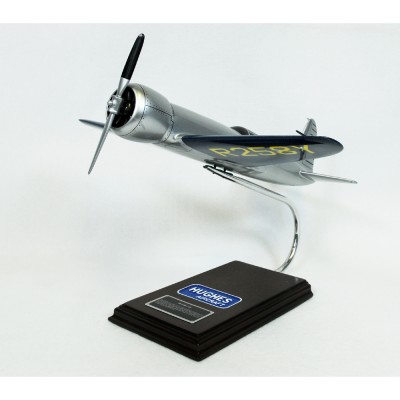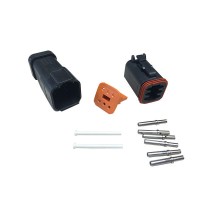THE AVIATION SUPERSTORE FOR ALL YOUR AIRCRAFT & PILOT NEEDS | 877-4-SPRUCE
Hughes 1-B Model
$229.95/Each
Part# 13-10999
MFR Model# KH1BTE
MFR Model# KH1BTE
Overview
|
The H-1 is a racing aircraft built by Howard Hughes company, setting a world speed airspeed record and a trnascontinental speed record across the United States. The H-1 was the first aircraft produced by Hughes Aircraft Corporation. The H-1s maiden flight was in 1935, breaking the world land-plane speed record of 352 mph averaged over 4 times passes with Hughes at the controls. In October 1934, the world seaplane speed record was 440 mph set by a Macchi M.C.72. Hughes made minor chnages to the H-1 Racer to make it more suitable for a transcontinental speed record attempt. The most significant change was the new, longer set of wings, which gave the plane a lighter wing loading. In January 1937, Hughes set a new transcontinental speed record, flying non-stop from Los Angeles to New York City in 7 hours, 28 minutes and 25 seconds. His average speed over the flight was 322 mph. Hughes assumed the United States Army Air Force to embrace the H-1s new design and make it as a basis for new generation of U.S. fighter planes, but it didnt happen when the USAAF used a fleet of P-39 Airacobras and P-40 Warhawks during World War II. In 1975, the original H-1 Racer was donated to the Smithsonian and is on display at the National Air and Space Museum. |
WARNING: Cancer and Reproductive Harm - www.P65Warnings.ca.gov. |
Q&A
Please note, Aircraft Spruce's personnel are not certified aircraft mechanics and can only provide general support and ideas, which should not be relied upon or implemented in lieu of consulting an A&P or other qualified technician. Aircraft Spruce assumes no responsibility or liability for any issue or problem which may arise from any repair, modification or other work done from this knowledge base. Any product eligibility information provided here is based on general application guides and we recommend always referring to your specific aircraft parts manual, the parts manufacturer or consulting with a qualified mechanic.








 FREE Shipping
FREE Shipping
